The SSSIHL STAR Lab Research team, led by Asst. Professor Dr. Sai Sathish Ramamurthy, has published a new paper in ACS Applied Materials & Interfaces that explores the use of a novel metal-free, graphene oxide-based photonic crystal framework (GraSP engineering) for Biosensing application. It enhances the performance of plasmonic materials and overcomes Ohmic losses in metals.
New GraSP Engineering to Help Enhance the Performance of Sensing Technologies
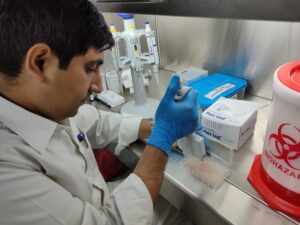
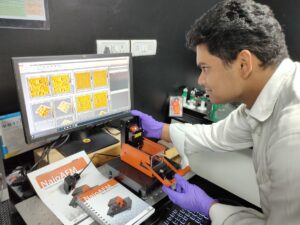
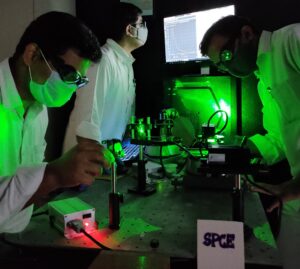
Identifying the Issue
- Sensors are of wide-spread use in industrial processes, public health control, homeland security, safety and monitoring
- Plasmonic materials made of metal nano-architectures are world-wide used for sensor technology development. However, their performance is plagued by inevitable intrinsic Ohmic losses, that impede the performance any sensing platform.
- As a result, there is constant hunt for alternative material technology development for global market sensor industries
Objective of the Research
- Identifying the root cause which leads to Ohmic losses
- Finding a cost-effective non-metal-based solution to minimize/stop the Ohmic losses and improve the performance of plasmonic materials, which in turn translates into greater efficiencies for the industries offering solutions based on sensing technologies
- Explore the possibility of the solution aiding in improving the overall sensitivity and specificity by 3-4 times as compared to existing metal-dependent sensor techniques
Who should read this?
Anyone in the industry, working directly or indirectly on sensor development or sensing related technologies including, security, surveillance, monitoring, environmental safety monitoring, medical technologies, and disease diagnostics.
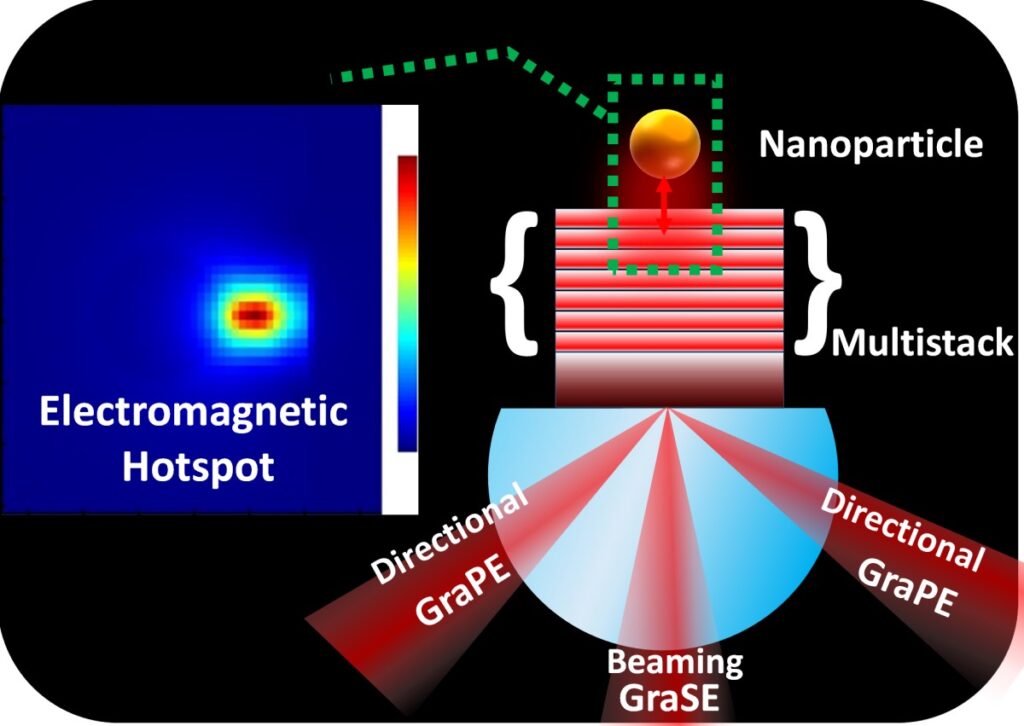
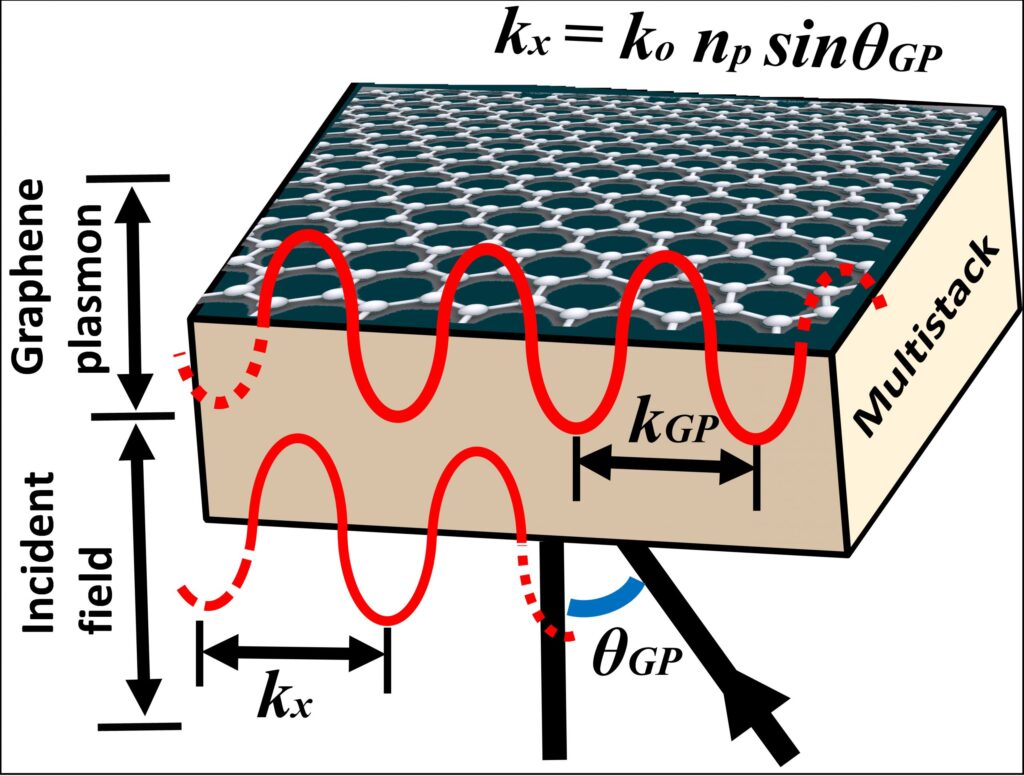
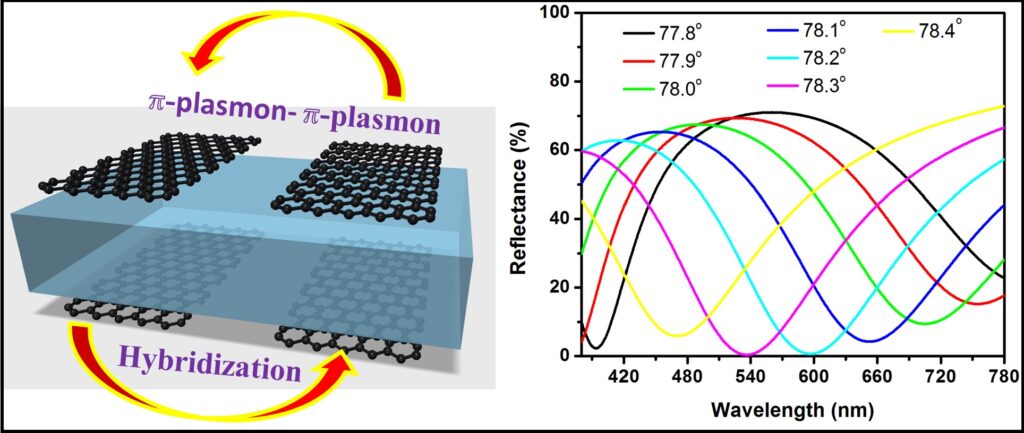
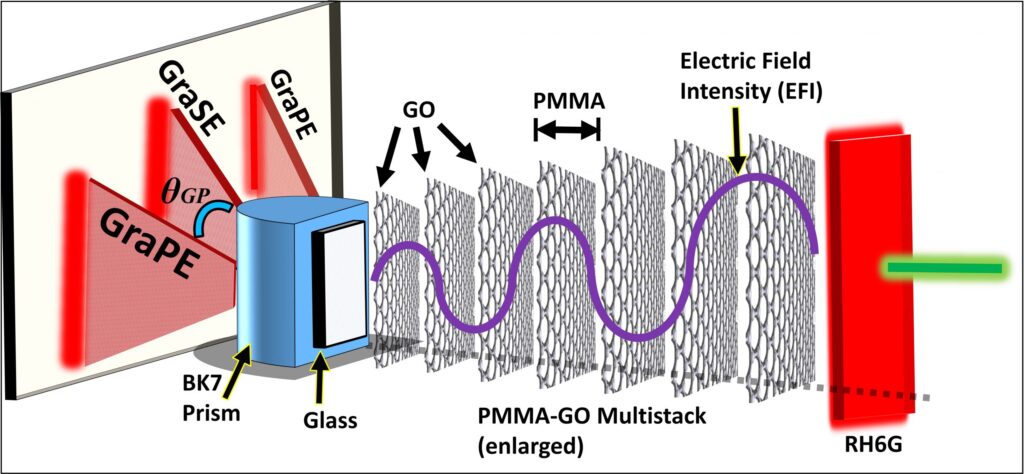
GraSP Engineering – A Eureka moment for the future of Sensing technologies
- The nanophotonic performance of the multistack was analyzed and successfully demonstrated to realize ‘graphene oxide plasmon-coupled soliton emission’ (abbreviated as GraSE) with steering/beaming emission characteristic as well as ‘graphene oxide plasmon-coupled emission’ (abbreviated as GraPE) with directional property
- Since both beaming GraSE and directional GraPE could be captured in a single platform, the combination led to the birth of GraSP emission platform
- An everyday example of soliton is a self-sustaining water bubble that maintains its shape as it moves, all the way from the bottom of the tank to the surface, in completely still water. Similar solitons transporting emitted photons in GraSP platform are successfully demonstrated in this research work for augmented sensor performance.
- GraSP can now simplify the existing surface plasmon resonance (SPR) technology with enhanced performance
Key Features and Benefits
- Use of non-metal platform to avoid Ohmic loss
- GraSP improves the overall sensitivity and specificity by 3-4 times as compared to existing metal-dependent sensor techniques
- The extreme light entrapment and augmentation via hotspots from surface states and nanoscopic volumes aided in lowering the detection limit of the HuIFN-γ antigen to 1.95 pg mL−1, for superior performance in resource limited settings
- GraSP platform is useful in disease diagnostics in early stages of disease conditions and also help in the advancement of Point-of-Care (POC) devices
Impact
- A simple, user-friendly, cost-effective methodology is adopted to realize GraSP engineering with soliton-aided metal analogues and directional emission patterns on a conventional existing sensor technology based on plasmonic platform
- The subject platform is expected to find immediate deployment for real-time point-of-care medical diagnostics. It is strongly believed that this study presents a stepping stone to a plethora of exciting plasmonic architectures and disruptive diagnostics in near future.
- An industry or market seeking such devices with augmented sensitivity could take forward the proposed methodology for utility in early disease diagnostics, environmental safety and industrial applications
- GrasP is especially beneficial for low- and middle-income countries
Team
Seemesh Bhaskar, Naga Sai Visweswar Kambhampati, K. M. Ganesh, Mahesh Sharma P, Venkatesh Srinivasan, and Sai Sathish Ramamurthy. STAR Laboratory, Department of Chemistry, Sri Sathya Sai Institute of Higher Learning, Prasanthi Nilayam, Puttaparthi, Anantapur, Andhra Pradesh 515134, India.
Paper Published In: ACS Applied Matter Interfaces.
Read Paper Here: https://pubs.acs.org/doi/10.1021/acsami.1c01024

